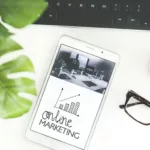A company’s logo is a critical marketing tool that represents a company’s aspirations. When you’re made aware of a company, one of the first things you’ll observe is their logo. If it resonates, you’re more likely to remember company. Your company logo is a representation of your brand, a visible component intended to attract your target market.
A well-designed logo is an essential aspect of any marketing strategy. Great companies have logos that are instantly recognized and closely associated with the company’s brand. Instant recognition is everything for businesses, but what makes a good logo?
Purpose
Corporate logos serve as the “face” of your company. They represent a unique identity, utilizing unique colors, designs, and images so customers can identify with your core brand. They enable people to refer to your company in a shorthand way, while creating a theme you can consistently incorporate across all your marketing materials.
Design Principles.
Good logos are unique, ensure you use originality to make a mark with your design. It’s important to hire a talented graphic designer with branding experience to help you create something visually striking that indicates your business principles in a snapshot. If you choose to use a logo maker like LogoGarden or GraphicSprings, keep in mind that simple logos are more recognizable. The intention is to convey some information about your company, while drawing the attention of users with eye-catching design. By giving some meaning to the industry you work in, consumers can quickly identify with your business. For example, a technology company might go with an angular loop which conveys speed. By doing your due diligence and experimenting with logo designs, you’ll eventually create something that suits the needs of your target audience.
Brand Identity & Return on Investment
Your logo will appear on websites, business cards, stationary, and advertising. It is the chief visual component underlining your brand identity. A well-designed logo can increase your bottom line. If you undervalue the importance of designing a good logo, you may give an impression of amateurishness and turn prospective customers off. Your logo should complement other company materials and initiatives, otherwise you’ll achieve visual confusion as opposed to consistency. This consolidates why your logo is a basic unit which stretches to your larger brand identity. As consumers begin to trust your brand, sales increase. You’ll exemplify professionalism and potentially steer new consumers towards your business.
Common Mistakes
When companies play it fast with logos, without giving design due care, results usually suffer. There are so many carbon copy logos out there, how do businesses intend to differentiate from the rest? You should avoid recreating existing logos, and understand when your logo is beloved and strongly represents your brand. In 2010, GAP learned a harsh lesson when they decided to change their logo. They abandoned changes after public outcry, when customers were unhappy to see the logo change. The original logo was strongly affiliated with the organization. Though it’s possible to successfully change your logo, people in general aren’t amenable to change. Unless you plan to innovate considerably with an entirely new strategy, it’s best to stick with what people know.








